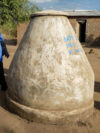Conservation and Community Empowerment in Tanzania’s Tarangire-Manyara Ecosystem
Tags: Research, Conservation Action, Tanzania
Implementing Partner: Tanzania Conservation and Community Empowerment Initiative (TACCEI)
The Human-Wildlife Coexistence Challenge
The Tarangire-Manyara ecosystem (TME) in northern Tanzania is a vital habitat for a diverse array of wildlife species. Spanning over 16,000 square kilometers, the ecosystem encompasses iconic areas such as the Tarangire and Lake Manyara National Parks, as well as several game reserves and wildlife corridors. Despite the natural beauty and ecological significance of the TME, human-wildlife conflict remains a significant challenge, threatening both the safety of local communities and the survival of wildlife.
As human populations grow and encroach further into wildlife habitats, interactions between people and animals have become increasingly frequent and often dangerous. Livestock depredation, crop damage, and the occasional threat to human life are common issues faced by communities living near protected areas. This conflict not only jeopardizes the livelihoods of local people but also fuels negative perceptions of wildlife, which can lead to retaliatory killings and other harmful practices.
The TACCEI Initiative: Promoting Coexistence and Education
In response to these challenges, the Tanzania Conservation and Community Empowerment Initiative (TACCEI) has launched the Human-Wildlife Coexistence and Environmental Education Project in the Tarangire-Manyara Ecosystem. This project aims to mitigate conflicts between humans and wildlife while fostering environmental awareness and education in the local communities.
TACCEI’s approach is multifaceted, focusing on both immediate conflict mitigation and long-term education efforts. The initiative emphasizes the importance of building local capacity and engaging communities in conservation efforts. Through a combination of innovative solutions like “Living Walls” and targeted educational programs, TACCEI is working to create a harmonious relationship between people and wildlife in the region.
Project Highlights: Living Walls and Environmental Education
- Living Walls Construction:
One of the project’s cornerstone initiatives is the construction of Living Walls—fortified enclosures designed to protect livestock from predators. Built on a cost-sharing basis with Maasai pastoralists, these Living Walls serve as a practical solution to prevent livestock depredation, thereby reducing the economic losses faced by local communities. By safeguarding livestock, the Living Walls help alleviate the tension between humans and wildlife, fostering a more peaceful coexistence. - Watu na Kanivora Program:
In addition to physical barriers, TACCEI is committed to educating communities about the importance of conservation. The Watu na Kanivora program (People and Carnivores) includes activities such as community meetings, conservation film screenings, and broadcasts on a community radio station in rural Simanjiro. These initiatives aim to raise awareness about the benefits of wildlife conservation and encourage positive attitudes towards coexistence with wildlife. - Environmental Education for Youth:
Recognizing the importance of engaging the next generation, TACCEI also organizes educational trips for students to Tarangire National Park. These excursions provide young people with first-hand experiences of wildlife and conservation efforts, inspiring them to become future stewards of their environment.
Measuring Success and Looking Forward
TACCEI employs a comprehensive monitoring and evaluation framework to assess the impact of the project. By collecting and analyzing data on human-wildlife interactions, conservation attitudes, and the effectiveness of Living Walls, TACCEI can adapt its strategies to ensure the greatest possible benefit for both people and wildlife.
The Tanzania Conservation and Community Empowerment Initiative is proud to be at the forefront of promoting sustainable coexistence between humans and wildlife in the Tarangire-Manyara Ecosystem. Through this project, TACCEI not only addresses the immediate challenges of human-wildlife conflict but also lays the foundation for a more peaceful and prosperous future for the region’s communities and its diverse wildlife.
For more information about TACCEI and its projects, visit their website or follow their social media channels.



